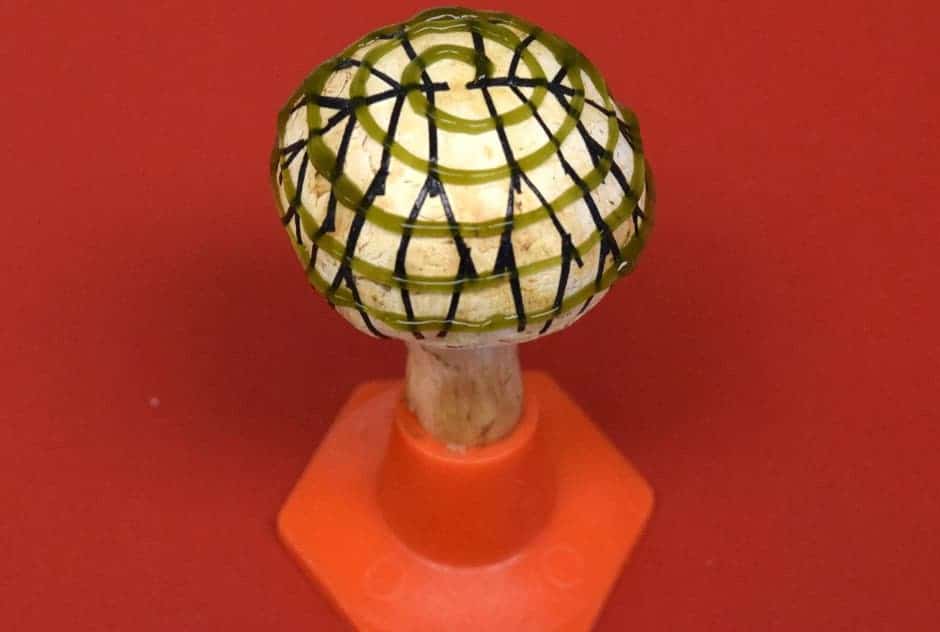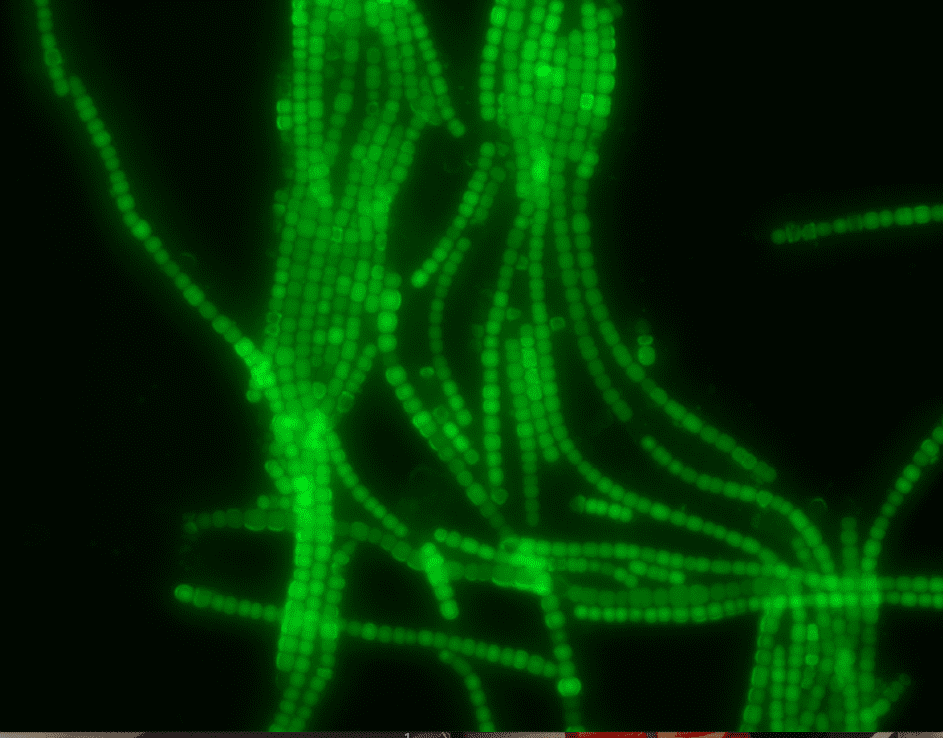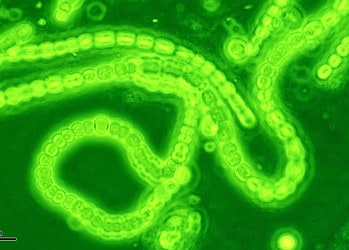What do you get when you 3-D print cyanobacteria onto button mushrooms? That would be an electrical generator, according to mechanical engineers at the Stevens Institute of Technology who mixed the two, along with a graphene nanoribbon network that carries current. They call this system ‘the bionic mushroom’.

Cyanobacteria –- single-celled organisms that are also known as blue algae –- use the sun’s energy, water, and carbon dioxide to produce oxygen by photosynthesis. About 2.6 billion years ago, cyanobacteria changed the state of the atmosphere forever by pumping oxygen, gradually transforming the planet from a hellish wasteland into a sprawling oasis of life. Without this transformation, known as the Great Oxidation Event, there would be no insects, no fish, and certainly no humans.
Cyanobacteria are also known among bio-engineers for their ability to generate small jolts of electricity, making them attractive prospects for energy generation. In 2016, researchers at Binghamton University used cyanobacteria to make a bio-solar panel and now researchers in New Jersey have integrated the microbes with nanomaterials and mushrooms to generate electricity.
“In this case, our system – this bionic mushroom – produces electricity,” said Manu Mannoor, an assistant professor of mechanical engineering at Stevens. “By integrating cyanobacteria that can produce electricity, with nanoscale materials capable of collecting the current, we were able to better access the unique properties of both, augment them, and create an entirely new functional bionic system.”
White button mushrooms are not only delicious, but they also host a rich microbiota that cyanobacteria can munch on. When placed on the cap of white button mushrooms, the cyanobacteria were exposed to optimal levels of nutrients, moisture, pH, and temperature. Experiments showed that the setup generated small amounts of electricity and lasted for several days longer compared to silicone and dead mushrooms used as controls.
“The mushrooms essentially serve as a suitable environmental substrate with advanced functionality of nourishing the energy-producing cyanobacteria,” postdoctoral fellow Sudeep Joshi said in a statement. “We showed for the first time that a hybrid system can incorporate an artificial collaboration, or engineered symbiosis, between two different microbiological kingdoms.”

To collect the electricity, the researchers 3-D printed an “electronic ink” made up of graphene nanoribbons that form a branched network. The cyanobacteria were also 3-D printed as “bio-ink” onto the mushroom’s cap in a spiral pattern that intersected with the graphene ribbons. This way, electrons traveled through the outer membranes of the microbes to the conductive network. When light was shone on the mushroom, photosynthesis was activated leading to the generation of photocurrent — essentially this is another example of a bio-solar panel.
The amount of electricity generated by the ‘bionic mushroom’ varies depending on the density and alignment with which the bacteria is packed, the authors reported in the journal Nano Letters. The more densely packed the bacteria, the more electricity they produce, which is where 3-D printing came in handy.
“With this work, we can imagine enormous opportunities for next-generation bio-hybrid applications,” Mannoor said. “For example, some bacteria can glow, while others sense toxins or produce fuel. By seamlessly integrating these microbes with nanomaterials, we could potentially realise many other amazing designer bio-hybrids for the environment, defence, healthcare and many other fields.”






